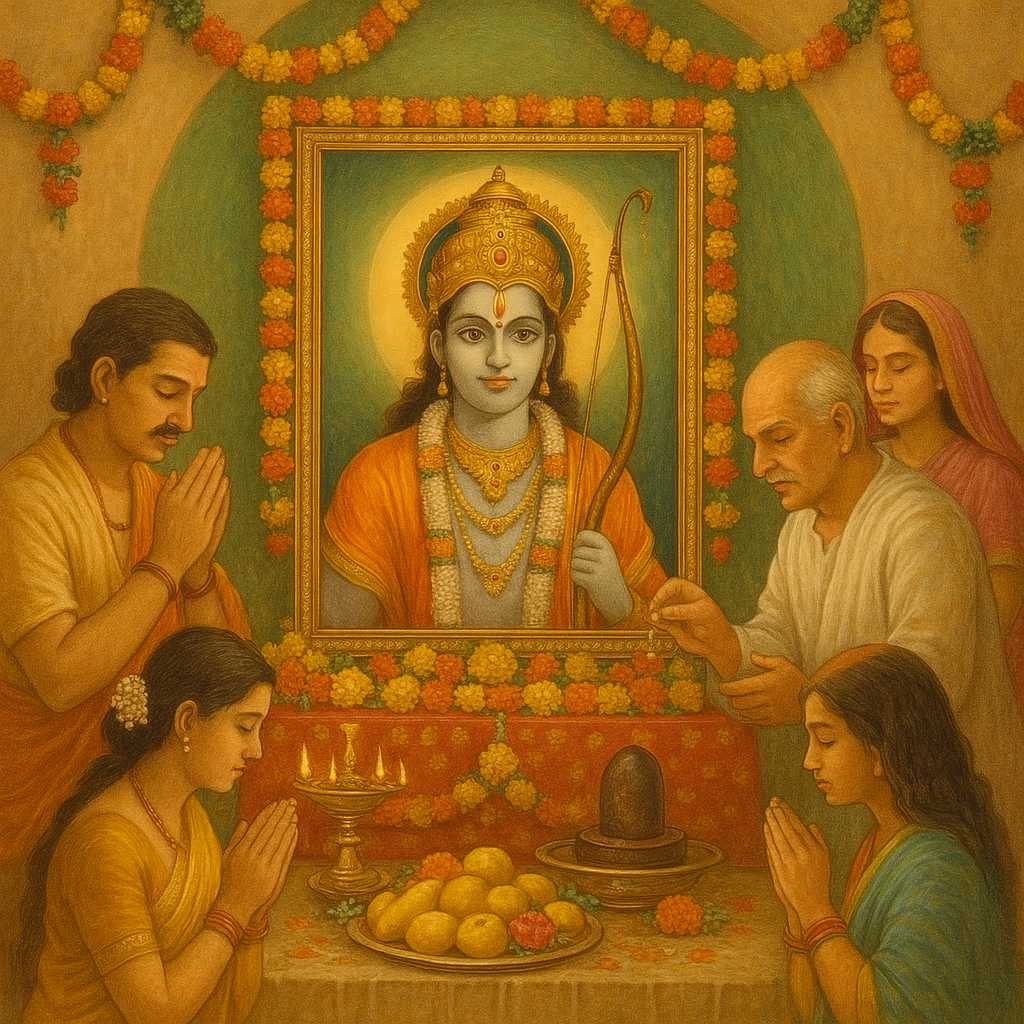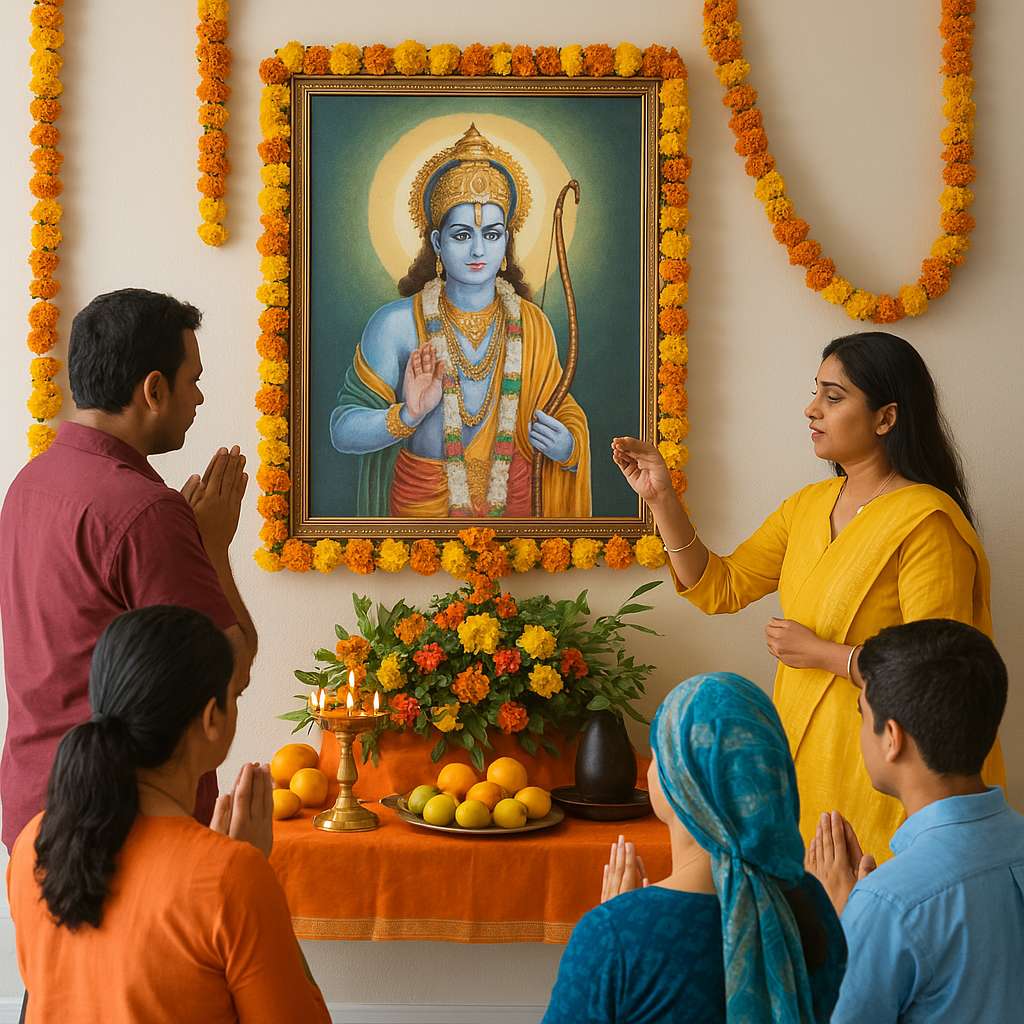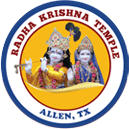Ram Navami is one of the most cherished festivals in the Hindu calendar. It commemorates the birth of Lord Ram, the seventh avatar of Lord Vishnu. Celebrated with great reverence and devotion across India and by Hindus worldwide, Ram Navami marks the culmination of the nine-day festival of Chaitra Navratri, which usually falls in March or April according to the Gregorian calendar.
Rooted deeply in Hindu mythology and sacred texts, this auspicious day is not just a celebration of Lord Ram’s birth, but a tribute to dharma (righteousness), virtue, humility, and the eternal fight between good and evil.
The Historical and Mythological Origins of Ram Navami
The story of Ram Navami originates from the Ramayan (dated between 500 BCE and 100 BCE), one of the greatest epics of Hinduism, composed by the sage Valmiki. In the Balakanda (Book of Childhood), it describes how King Dasharath of Ayodhya, a righteous ruler from the Ikshvaku dynasty, had three queens — Kausalya, Kaikeyi, and Sumitra — but no children for many years. Desiring an heir, he performed the sacred Putrakameshti Yagna, a ritual meant to bless childless couples.
As a result of the yagna, the gods were pleased and offered the queens a divine payasam (sweet pudding). In time, Queen Kausalya gave birth to Ram, Kaikeyi to Bharat, and Sumitra to Lakshman and Shatrughn.
Ram, born on the ninth day (Navami) of the Chaitra month at noon during the Shukla Paksha (waxing moon), was destined to become a divine incarnation of Lord Vishnu, born to restore balance and righteousness on Earth. His life, trials, and triumphs are immortalized in the Ramayan, where he defeats the demon king Ravan and rescues his consort, Sita, symbolizing the victory of good over evil.

Spiritual Significance of Ram Navami
While Ram Navami is a historical celebration of a divine birth, its spiritual underpinnings run deeper. Lord Ram is regarded as the Maryada Purushottam — the perfect human being — who exemplified virtues such as truth, duty, compassion, and unwavering faith in dharma.
Thus, Ram Navami inspires millions to reflect on their lives and align with righteous conduct, discipline, and moral integrity. The festival is seen as an opportunity to purify the heart, cultivate devotion (bhakti), and embrace the values Ram embodied.
How Ram Navami is Celebrated Across India
Ram Navami is observed to have great fervor throughout India. While the core devotion remains constant, the style of celebration varies from region to region.
1. Ayodhya – The Epicenter of Devotion
Ayodhya, the birthplace of Lord Ram, is located in Uttar Pradesh. During Ram Navami, it becomes a hub of spiritual and cultural activity. Devotees from all over the country flock to this holy city to participate in grand celebrations.
The Ram Janmabhoomi Mandir, now reconstructed as a majestic temple, attracts lakhs of devotees who offer prayers. A grand Rath Yatra (chariot procession) featuring idols of Lord Ram, Sita, Lakshman, and Hanuman is also held in the streets, accompanied by chants of “Jai Shree Ram!” The Sarayu River, which flows near Ayodhya, becomes a sacred site for ritual baths.
2. South India – Musical Devotion and Kalyanotsavam
In South Indian states like Tamil Nadu, Karnataka, and Andhra Pradesh, the celebration is profoundly devotional and musical. At temples dedicated to Lord Rama, particularly in Bhadrachalam, Srirangam, and Rameswaram, the festival is marked with Kalyanotsavam — a symbolic Ram and Sita wedding ceremony.
Musical performances fill the air, particularly of bhajans, Harikatha, and Ramayan recitals. In Karnataka and Tamil Nadu, people also observe Ram Pattabhishekam, a symbolic coronation ceremony of Lord Ram.
3. Maharashtra and Gujarat – Processions and Community Events
In cities like Mumbai and Ahmedabad, Ram Navami is celebrated with Ram Rathayatras, kirtans, and satsangs. Temples are decorated with flowers, lights, and mango leaves. Community kitchens serve panakam (a jaggery and pepper drink) and kosambari (moong salad), which are considered traditional Ram Navami offerings.
4. Eastern India – Connection with Vaishnavism
In regions like Odisha and Bengal, the focus is on recitation of the Ramayan and Vaishnavite practices. Temples dedicated to Lord Jagannath (considered a form of Shree Krishna and thus related to Ram through Vishnu) also participate in Ram Navami festivities.
5. North-East India and Nepal
Ram Navami is celebrated with equal grandeur in states like Manipur and Nepal, where Lord Ram is revered as a national hero. Nepal, home to Janakpur — Mother Sita’s birthplace — holds special festivities in Janakpur and Kathmandu.
Fasting and Rituals
Many devotees observe vrat (fasting) on Ram Navami by abstaining from food or consuming only fruits and milk. The fast is seen as a way to purify the body and soul.
Some of the prominent rituals include:
- Reading the Ramayan or Ramcharitmanas by Tulsidas
- Offering naivedyam (food offerings) like panakam, kosambari, and sweet dishes like kheer
- Chanting the Ram Nama (name of Ram), such as the 108 or 1008 names of Ram
- Decorating home altars with images of Lord Ram, Sita, Lakshman, and Hanuman
- Charitable acts, such as feeding the poor or organizing satsangs in community centers
Global Celebrations
As Hindu communities have settled abroad, Ram Navami has found a place of pride in temples around the world — from the Radha Krishna Temples in the United States, to ISKCON centers in Europe, to Hindu temples in the Caribbean, Fiji, and Mauritius.
These international celebrations often include:
- Ram Katha (storytelling)
- Plays based on Ramayan (especially Ramleela)
- Musical and dance performances
- Group chanting of Ram Raksha Stotra and Hanuman Chalisa
- Community feasts (prasad distribution)

The Modern Relevance of Ram Navami
In today’s fast-paced world, where moral dilemmas and societal challenges abound, the message of Ram Navami is timeless. Lord Ram's life teaches us the importance of:
- Upholding truth and justice, even at personal cost
- Practicing compassion and humility, regardless of one's power
- Maintaining family values and societal duties
- Trusting divine will even in adversity
It is a festival that brings families together in prayer and introspection. With increasing awareness, more young people participate in the celebrations, sometimes through digital means — attending online bhajans, watching Ramayan plays, or joining virtual satsangs.
Ram Navami in Art and Culture
Ram Navami is not just a spiritual event; it’s a fountain of cultural richness. Over the centuries, artists, poets, and musicians have paid homage to Lord Ram through:
- Kritis and Bhajans by saints like Tyagaraja and Tulsidas
- Ramleela performances across North India
- Traditional paintings and murals depicting episodes from Ram’s life
- Classical dance forms like Bharatanatyam, Kathak, and Kuchipudi, often portray Ram’s story
Conclusion: An Invitation to Live Ram’s Way
Ram Navami is more than a festival. It is a reminder, a renewal, and a resolution. It is a reminder of the divine birth that changed the course of time, a renewal of faith in the eternal battle between dharma and dharma, and a resolution to live, as Ram did, with courage, kindness, and conviction.
Whether celebrated in a temple, in one’s home, or in the quiet sanctuary of the heart, Ram Navami is a beacon of light, calling us back to our true selves and towards a more compassionate world.
So this Ram Navami, let us bow to Maryada Purushottam Shree Ram, seek his blessings, and strive to walk the path of righteousness — one step at a time.
Jai Shree Ram!
Call to Action
Celebrate Chaitra Navratri, Ugadi, Gudi Padwa at Radha Krishna Temple of Dallas, March 29 - April 06. Please register here. Celebrate Ram Navami at Radha Krishna Temple of Dallas, April 4 - 6. Please register here.
